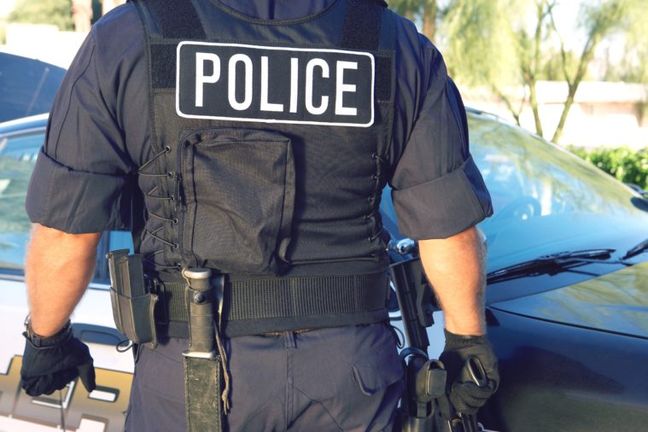Typically, businesses directly hire employees to fill various roles within their organization. In these situations, the employer is likely responsible for the acts of the employee if the employee is acting within the course and scope of their employment (i.e., “on the job”). Businesses will also utilize staffing agencies at times to hire temporary workers. In these situations, who is the employer of these temporary workers – the staffing agency or the host employer? A recent Washington case, Department of Labor and Industries v. Tradesmen International, LLC, clarified.[i]
Facts
This case arose after two staffing agencies were cited for WISHA safety violations. Tradesman International, LLC (“Tradesman”) is a staffing agency with the exclusive responsibility to pay wages, and LB is a staffing agency which paid workers’ compensation, unemployment insurance, and wages to its workers. Tradesman is obligated to provide compensation, including wages and benefits, taxes, unemployment insurance, and workers’ compensation insurance. Host employers working with Tradesman are solely responsible for directing, supervising, and controlling Tradesmen employees and their work. LB is a staffing agency which paid workers’ compensation, unemployment insurance, and wages to its workers. It did not, however, determine wage rates – the host employer determined the wage rates. LB provided initial training to workers but did not perform random jobsite safety checks, and while both LB and host employers maintained the right to terminate workers, the host employer exerted daily control over the workers by assigning work and providing supervision.[ii]
The Department of Labor and Industries (L&I) has standing to administer citations for violations of the Washington Industrial Safety and Health Act of 1973 (WISHA). Because of the WISHA safety violations from staffing operations with staffing agencies LB and Tradesmen, L&I cited both staffing agencies. In both cases, the citations were vacated by the Board. The Board of Industrial Insurance Appeals (“Board”) found Tradesmen lacked control over workers and the work environment. The Board did not find LB lacked control over workers and the work environment. L&I appealed the decisions to superior court.
The superior court reinstated the citations for LB, but affirmed the Board and vacated the citations for Tradesmen. L&I appealed. The Court of Appeals held the staffing agencies were not liable employers under WISHA and vacated the citations. The Washington Supreme Court granted review and consolidated the two cases.
Analysis
The issue was whether staffing agencies are employers liable for safety violations under WISHA. Evidence was not reweighted and review was limited to the examination of the record before the Board. The Board looked to the economic realities and who controlled the workspace. It reasoned the host employer and staffing agency could not both be sanctioned unless they both had substantial control over the workers and the work environment. The Board considered the following factors:
1) who the workers consider their employer;
2) who pays the workers’ wages;
3) who has the responsibility to control the workers;
4) whether the alleged employer has the power to control the workers;
5) whether the alleged employer has the power to fire, hire, or modify the employment condition of the workers;
6) whether the workers’ ability to increase their income depends on efficiency rather than initiative, judgment, and foresight; and
7) how the workers’ wages are established.[iii]
The court looked to the putative employer’s right to control both the workers and the physical work environment, which included work conditions and the work site. The focus of the assessment was the element of control. Factors included responsibility for controlling worker activities, power to control the employee, and power to fire or modify work conditions. Who paid wages and the worker’s belief of employment had some bearing, but these factors were not viewed as directly related to the issue of control. The court found responsibility rested with the entities best able to ensure a safe working environment and protect the workers. The court reasoned an employer who knew or should have known of a hazard and had some relevant control over the workers and related work conditions may carry liability.
The Washington Supreme court affirmed the Court of Appeals as to Tradesmen and reversed as to LB. The Tradesman citations arose from a fall from scaffolding hazards. The court held Tradesmen had no ability to identify or abate the fall and scaffolding hazards at the unapproved site, and the infrastructure-related violations were simply beyond the purview of Tradesmen’s control. The LB violations arose from “provision of vaccinations, implementing proper safety equipment for sharp object exposure, inadequate safety training, and inadequate medical recordkeeping.”[iv] The court found the citations involved conditions within LB’s control. Namely, the failure to properly prepare the workers for work.
Conclusion
Each case, involving a discrepancy over which employer has control, must be determined on an individual basis; there is no hard and fast rule. The factors mentioned above must be applied to each unique set of facts. The exercise of control over a worker places an employer (either a staffing agency or the host employer) in the position of responsibility for the worker. Employers would be wise to incorporate a rigorous vetting process prior to providing a worker or accepting a worker. The sting of liability is never light, and often remains long after a worker is gone.
[i] Department of Labor and Industries v. Tradesmen International, LLC, 196 Wash.2d 1036, 479 P.3d 1162 (2021).
[ii] Id.
[iii] Id.
[iv] Id.

 Cannabis Workers Allege Quota to Trim 4 Pounds a Day Violates the California Labor Code
Cannabis Workers Allege Quota to Trim 4 Pounds a Day Violates the California Labor Code
 The Ninth Circuit Reminds Us: Every Word Matters
The Ninth Circuit Reminds Us: Every Word Matters
 NO WAY, PRO SE! The Consequences of Abusing the Judicial System as a Pro Se Litigant in Colorado
NO WAY, PRO SE! The Consequences of Abusing the Judicial System as a Pro Se Litigant in Colorado
 Victim of Financial Mismanagement or Unlawful Retaliation? New Jersey City University Program Founder Claims School Retaliated After Reporting Alleged Sexual Harassment
Victim of Financial Mismanagement or Unlawful Retaliation? New Jersey City University Program Founder Claims School Retaliated After Reporting Alleged Sexual Harassment
 “Real Housewives” Gets a Reality Check
“Real Housewives” Gets a Reality Check
 Missing a Chapter: Insufficiency of Expert Deposition Testimony in Medical Malpractice Litigation
Missing a Chapter: Insufficiency of Expert Deposition Testimony in Medical Malpractice Litigation
 Crash Course: Why Summary Judgment Misses the Mark in Illinois Multi-Cause Limousine Crash Collision
Crash Course: Why Summary Judgment Misses the Mark in Illinois Multi-Cause Limousine Crash Collision
 Bitter Truths: Lead, Cadmium, and Defective Pleadings in California Chocolate Class Action
Bitter Truths: Lead, Cadmium, and Defective Pleadings in California Chocolate Class Action
 The Law of Unintended Consequences: Including Insurance Brokers in Litigation Strategy Communication May Waive the Attorney-Client Privilege
The Law of Unintended Consequences: Including Insurance Brokers in Litigation Strategy Communication May Waive the Attorney-Client Privilege
 Liability Waivers: A Cautionary Tale of the Inconspicuous Waiver
Liability Waivers: A Cautionary Tale of the Inconspicuous Waiver
 One For the Landlords in Washington
One For the Landlords in Washington
 Covenant Judgments Can Be the Foundation of Bad Faith Claims
Covenant Judgments Can Be the Foundation of Bad Faith Claims
 Falling for Liquor: Washington Court Reaffirms Premises Liability Law
Falling for Liquor: Washington Court Reaffirms Premises Liability Law
 New Pathways to Recover for Intentional Inference with a Corpse in Washington
New Pathways to Recover for Intentional Inference with a Corpse in Washington
 When Washington Statute and The Constitution (Somewhat) Collide
When Washington Statute and The Constitution (Somewhat) Collide
 Opening the Wrong Doors
Opening the Wrong Doors